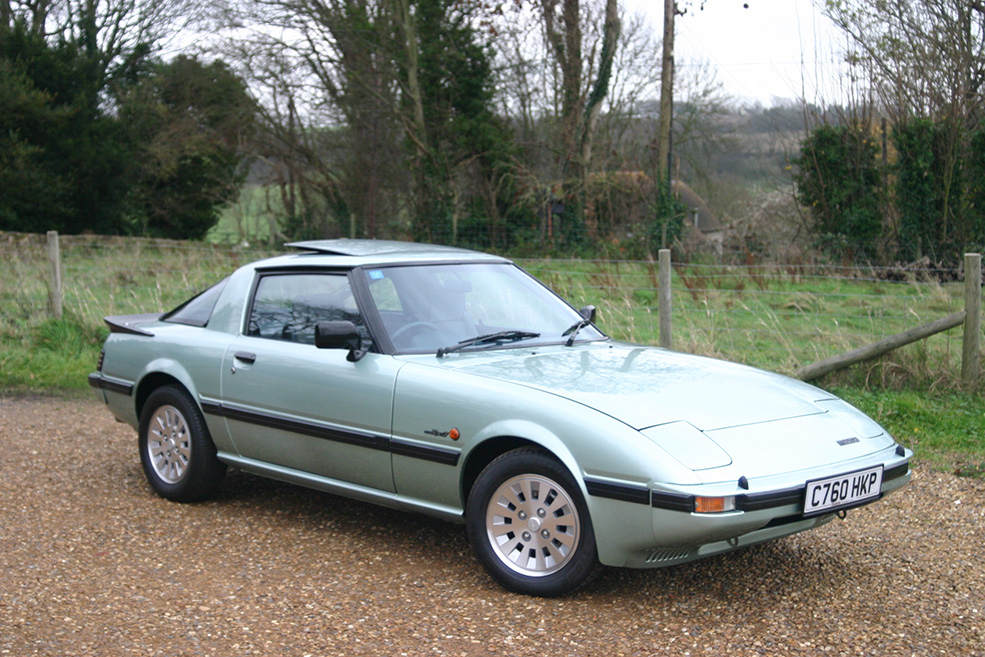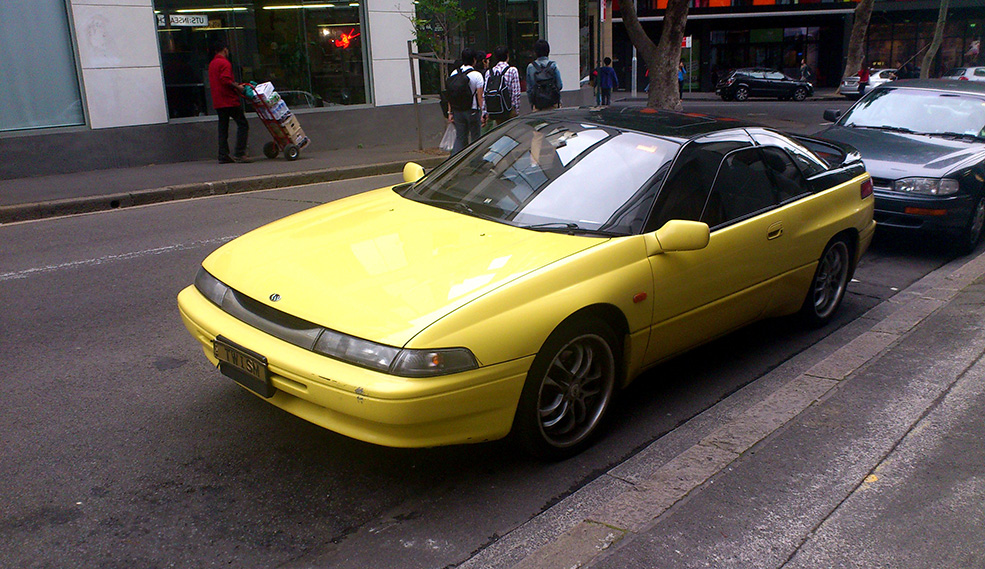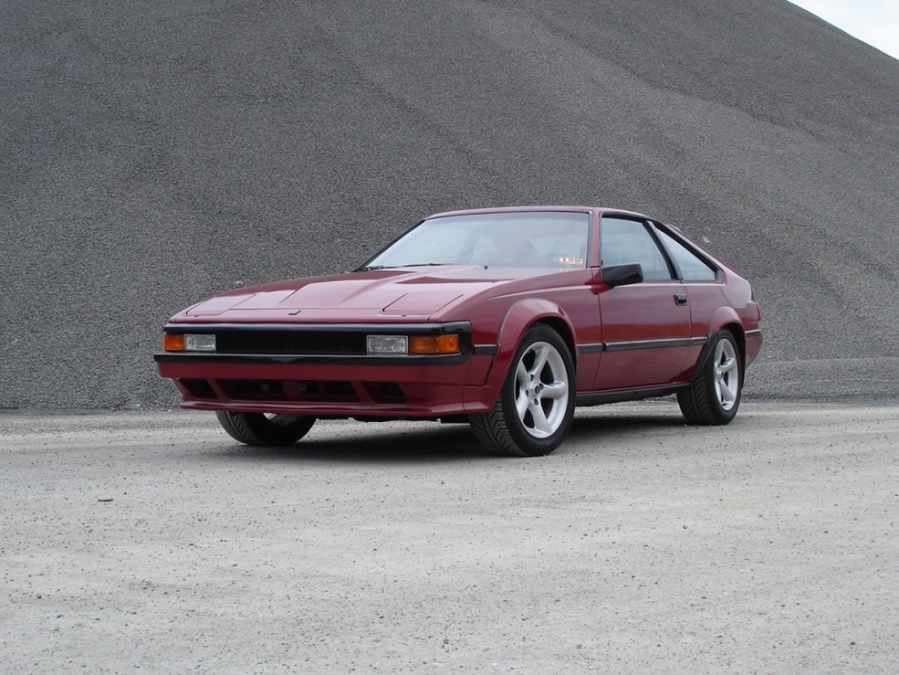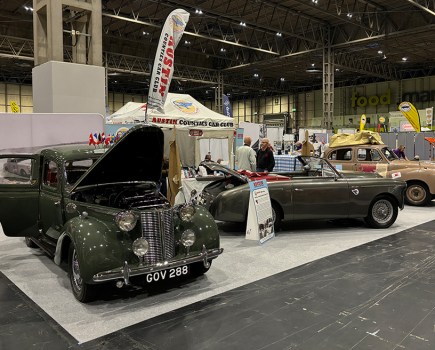In this Market Trends we look at three great Japanese coupes, the Subaru SVX, Mazda RX-7 FB and Toyota Supra Mk2…
TOYOTA SUPRA MK2
The fourth generation Toyota Supra saw the end of a once-great name in motoring. Launched in 1993, the car saw out the Supra name in 2002 – and was not directly replaced. Development had begun in 1989, and by 1992 prototypes were being tested using subframes, suspension and drivetrain components from the Lexus Soarer. The Supra was going upmarket, and Toyota was intending to develop its performance to the full. That’s why by its launch in 1993 the Supra featured a 3.0 six-cylinder engine with a pair of turbochargers, and why through careful design it was more aerodynamic and 91kg lighter than its predecessor. Producing 326bhp, it still drove the rear wheels – this time through a six speed box.
Some Japanese market cars lacked the turbochargers, and may have been imported on the grey market. These cars are worth less than turbocharged grey imports which in turn are worth less than original UK market Supras. Cars which have been accident damaged or written off are also worth less, and with cars like this that’s always a concern. Cars with poor provenance or a lack of service history can be worth as much as 20 per cent less than an equivalent car with a full and unblemished record.
Values have doubled over the last three years, with the average prices between £15,000-20,000. The best cars can command in excess of £30,000, while tired cars barely scrape five figures. It’s imperative to get the best example possible, but their recent performance at auction suggests that Supras are well worth keeping an eye on for future rises.

MAZDA RX-7 FB
The fourth generation – or FD – Mazda RX-7 was a risky move for the company, because its width exceeded Japanese class limits and therefore the car was subjected to a hefty luxury vehicle tax. But those who feared it was losing its roots shouldn’t have been too scared. It was the first model on sale outside of Japan with a twin turbocharged rotary engine – developing 276bhp if the official figures were to be believed, but as Japan’s gentleman’s agreement led to this being the maximum power permitted for a car on sale, let’s just say it’s convenient that it happens to be what the RX7 produced.
Unlike previous models, there was no cabriolet offered. And while some cars did come to the UK officially, the majority of those you’ll find here will be grey imports. Genuine UK cars are – condition notwithstanding – more valuable than grey imports.
Following a market crash in summer 2015, values have slowly been building back up. From mid 2017 to the present day that upward trajectory has been steeper, suggesting that prices may rise over the coming months at an accelerated level. But we would advise caution – in our eyes the vicissitudes within the market suggest that it would be wise to wait and see how they perform over the next few months before considering an RX-7 as an investment buy. At the very least, what we would suggest is that it’s unlikely to lose you money in the near future if you choose to buy one to use and enjoy.

SUBARU SVX
The Subaru SVX was the result of Subaru’s attempt to go upmarket. Unlike the previous Alcyone (sold in the UK as the XT) the SVX was solely available with a 3.3-litre naturally aspirated boxer V6, driving all four wheels through a four speed automatic gearbox. Just 25000 were sold worldwide, and while the biggest market by some margin was North America, there are a number of SVXs in the UK too. Launched in 1991, the Giugiaro-styled SVX lasted just five years before Subaru withdrew from the premium coupe market, and became Subaru’s last coupe until the Toyota-based BRZ of 2012.
There were 2 types of AWD system used on the SVX depending on where in the world the car was first supplied. The variable torque distribution, which varied power depending on prevailing conditions, is most desirable. Fortunately, all RHD cars were fitted with this, so it’s not something you should worry about upon purchase.
The Subaru SVX is the cheapest of our Japanese coupes on average, with values hovering around the £5000 mark for the last four years. We highly doubt that this will change soon, though the last few months have seen a ten percent rise we feel this is due more to the quality of cars offered than any market trend. The low number in the UK is reflected in the results, with several months passing without any cars appearing for sale. It’s one of those whereby if you want one, buy it while you can.
Mazdassssssss








